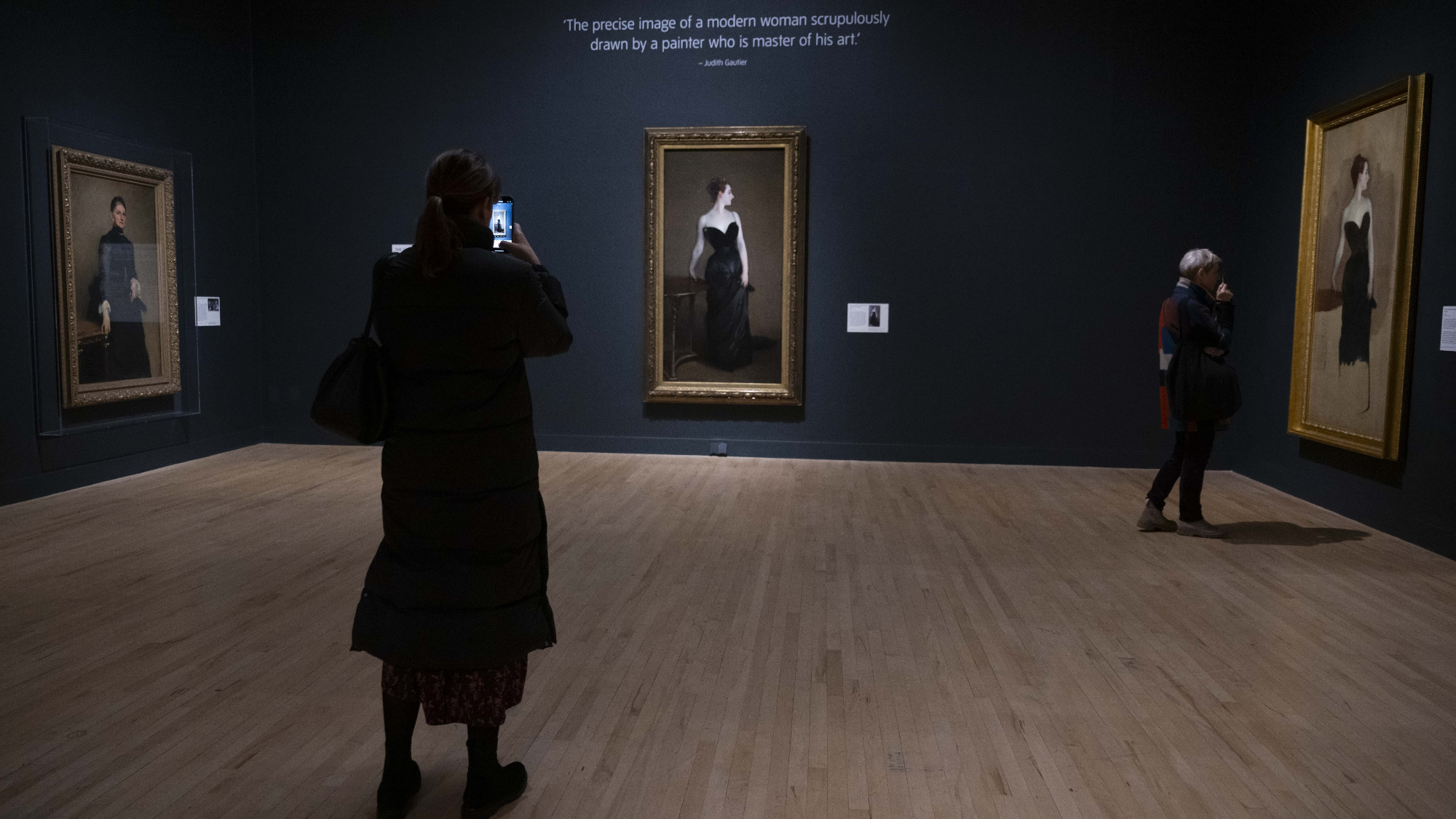Sargent and Fashion: Tate Britain's new show 'spectacular' but 'myopic'
The exhibition puts the artist's 'interest in and skill with fashion' in the spotlight

John Singer Sargent was an artist who "clearly loved clothes", said Francesca Peacock in Prospect. His world "was one of lavish haute couture and costumed dress": an in-demand painter of society portraits, Sargent (1856-1925) specialised in likenesses "of society beauties in miles of silk" and "serious canvases of serious men" – themselves often no less lavishly attired. He played with the costumes in which he depicted his subjects, changing colours of garments to better suit a picture, and conjuring outfits from his imagination when models "only had rolls of fabric to pose with". Indeed, after altering the colour of a sitter's dress in one portrait, he proclaimed himself both "painter and dressmaker".
This new show at Tate Britain explores the artist's "interest in and skill with fashion", bringing together dozens of Sargent's best-known paintings to show how he used clothes "as a way of telling a story". Presented alongside many of these portraits are some of the actual garments worn by his sitters, and these lend a "material, fabric-y delight" to proceedings. It adds up to a "spectacular" exhibition.
Born in 1856 in Florence to American parents, Sargent was "cosmopolitan, ironic and sophisticated", said Jonathan Jones in The Guardian. Like his friend Henry James, he was "a great artist of identity, fascinated with the nature of social being", a painter of works that were "startling" and "modern".
The Week
Escape your echo chamber. Get the facts behind the news, plus analysis from multiple perspectives.

Sign up for The Week's Free Newsletters
From our morning news briefing to a weekly Good News Newsletter, get the best of The Week delivered directly to your inbox.
From our morning news briefing to a weekly Good News Newsletter, get the best of The Week delivered directly to your inbox.
There are some wonderful pictures here: his "fascinating" portrait of Lord Ribblesdale, for instance, is "a positively Sadean image of an aristocrat in top hat, black coat and boots, holding a riding crop he might be about to use on a horse or housemaid", while his Aline de Rothschild introduces us to a personality "full of life and wit".
Yet focusing on Sargent's relationship with fashion seems shallow and "myopic": the works here are "wretchedly displayed" and the garments add little to our understanding of his art, which can't be reduced to facts about hats, dresses and opera gowns. "This is a horrible exhibition."
The show "could have done with an edit", said Waldemar Januszczak in The Sunday Times. Some of the likenesses seem "interchangeable". And by "concentrating so fiercely on the clothes", Sargent often appears to have chosen to focus on surface over "depth" and "inner life".
And indeed his "most celebrated" and, at the time, most scandalous work – "Portrait of Madame X", showing a society lady in a revealing dress – is somewhat superficially "captivating". She's "90% fashion plate, 10% real person". Yet this exhibition is a wonderful exploration of Sargent as "an artistic impresario, an ambitious creator of looks and events". His work feels familiar in the age of social media. "Vacuous celebrities, absurdly expensive clothes, nobodies posing as somebodies – Sargent's world strikes a chord today because we recognise it so easily as our world."
A free daily email with the biggest news stories of the day – and the best features from TheWeek.com
-
 The MAGA civil war takes center stage at the Turning Point USA conference
The MAGA civil war takes center stage at the Turning Point USA conferenceIN THE SPOTLIGHT ‘Americafest 2025′ was a who’s who of right-wing heavyweights eager to settle scores and lay claim to the future of MAGA
-
 The 8 best drama movies of 2025
The 8 best drama movies of 2025the week recommends Nuclear war, dictatorship and the summer of 2020 highlight the most important and memorable films of 2025
-
 Why, really, is Trump going after Venezuela?
Why, really, is Trump going after Venezuela?Talking Points It might be oil, rare minerals or Putin
-
 The 8 best drama movies of 2025
The 8 best drama movies of 2025the week recommends Nuclear war, dictatorship and the summer of 2020 highlight the most important and memorable films of 2025
-
 The best homes of the year
The best homes of the yearFeature Featuring a former helicopter engine repair workshop in Washington, D.C. and high-rise living in San Francisco
-
 Critics’ choice: The year’s top 10 movies
Critics’ choice: The year’s top 10 moviesFeature ‘One Battle After Another’ and ‘It Was Just an Accident’ stand out
-
 A luxury walking tour in Western Australia
A luxury walking tour in Western AustraliaThe Week Recommends Walk through an ‘ancient forest’ and listen to the ‘gentle hushing’ of the upper canopy
-
 Joanna Trollope: novelist who had a No. 1 bestseller with The Rector’s Wife
Joanna Trollope: novelist who had a No. 1 bestseller with The Rector’s WifeIn the Spotlight Trollope found fame with intelligent novels about the dramas and dilemmas of modern women
-
 The best books of 2025
The best books of 2025The Week Recommends A deep dive into the site of a mass shooting, a new release from the author of ‘Atonement’ and more
-
 Appetites now: 2025 in food trends
Appetites now: 2025 in food trendsFeature From dining alone to matcha mania to milk’s comeback
-
 The best music of 2025
The best music of 2025The Week Recommends These were some of the finest releases of the past year